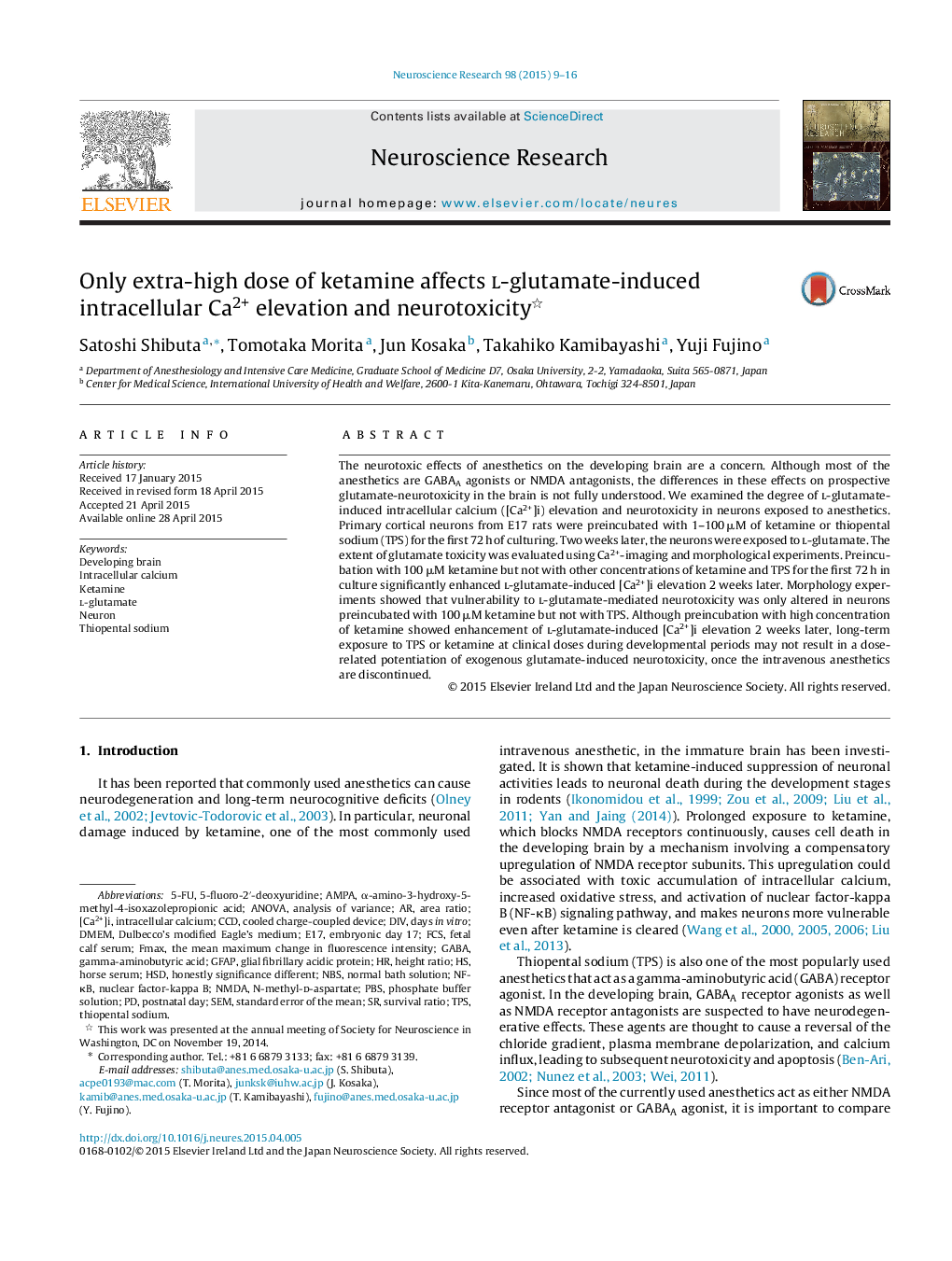| Article ID | Journal | Published Year | Pages | File Type |
|---|---|---|---|---|
| 4351334 | Neuroscience Research | 2015 | 8 Pages |
•Glu-induced Ca elevation/toxicity in neurons once exposed to anesthetics examined.•Ca-imaging and morphological experiments were used.•Once high dose ketamine exposure enhanced Glu-induced Ca elevation 2 weeks later.•Once exposed ketamine slightly enhanced vulnerability against Glu-induced toxicity.•Once exposed TPS not potentiated Glu-induced Ca elevation/neurotoxicity.
The neurotoxic effects of anesthetics on the developing brain are a concern. Although most of the anesthetics are GABAA agonists or NMDA antagonists, the differences in these effects on prospective glutamate-neurotoxicity in the brain is not fully understood. We examined the degree of l-glutamate-induced intracellular calcium ([Ca2+]i) elevation and neurotoxicity in neurons exposed to anesthetics. Primary cortical neurons from E17 rats were preincubated with 1–100 μM of ketamine or thiopental sodium (TPS) for the first 72 h of culturing. Two weeks later, the neurons were exposed to l-glutamate. The extent of glutamate toxicity was evaluated using Ca2+-imaging and morphological experiments. Preincubation with 100 μM ketamine but not with other concentrations of ketamine and TPS for the first 72 h in culture significantly enhanced l-glutamate-induced [Ca2+]i elevation 2 weeks later. Morphology experiments showed that vulnerability to l-glutamate-mediated neurotoxicity was only altered in neurons preincubated with 100 μM ketamine but not with TPS. Although preincubation with high concentration of ketamine showed enhancement of l-glutamate-induced [Ca2+]i elevation 2 weeks later, long-term exposure to TPS or ketamine at clinical doses during developmental periods may not result in a dose-related potentiation of exogenous glutamate-induced neurotoxicity, once the intravenous anesthetics are discontinued.
